How to Lose an Online Shopper (In 10 Ways)

There's little evidence against this holiday season being one of the best for ecommerce but many indicators to support a record-setting year.
During the busy shopping months (November-December) of 2015, desktop retail sales increased six percent versus 2014 and mobile retail sales enjoyed a 13 percent annual gain. The volume will certainly be there, but retailers must do their part to meet the expectations that shoppers bring with them as they search for the perfect gift or even look to take advantage of a sale to buy something for themselves.
Acquiring new shoppers is expensive, of course, so merchants will want to ensure they don't lose a potential customer once they are on their site by making some top ecommerce mistakes.
Here's how to lose a first-time customer in 10 ways:
Don't adapt to the device
Desktop sales increased last year, yes, but mobile sales surged. With Demandware research indicating that phones are now the top device driving ecommerce traffic (47 percent in the U.S.), retailers who don't have a fully optimized experience will miss out on a valuable revenue source - mobile shoppers.
As competitors start offering better mobile experiences, mobile consumers, who have to date almost expected a bad experience, will show no mercy. As an industry, we're beyond getting annoyed with pinch-and-zoom sites as retailers are offering app-like features that take advantage of how shoppers use a mobile device (like a keypad for numerical entries, large calls-to-action or "swiping" to view a picture gallery).
For some inspiration, retailers should check out oldnavy.com on their phones, add an item to their cart and interact with the product pages (example shown below) to understand what it's like to not just adapt to a device but optimize for it.
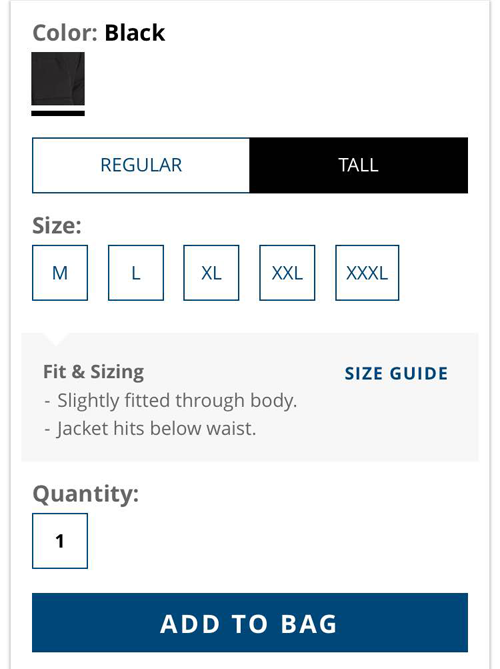
Pay little attention to product descriptions
Shoppers crave information when making decisions online. Product descriptions can help or hurt a retailer's chances for closing a sale as shoppers turn to these in order to collect information. If a person is dead set on an item (having seen it elsewhere, hearing about it from a friend, etc.), a missing or generic product description could still yield a conversion but if they are on the fence, they need a descriptive product description that tells them who it's for, what it is and why they should want it.
In the quest to write compelling copy, retailers shouldn't get carried away, however, as factual info is more important than adjective or keyword stuffing as that can hurt a retailer's long game. In fact, 87 percent of consumers are unlikely to ever buy from a retailer again if they purchase an item that did not have a correct product description.
Victoria's Secret provides good examples of compelling product descriptions using words like "slim fit" and "deep zip" for one item, to paint a visual description. The bullet points are also a nice touch, since the majority of Web users are "scanners."
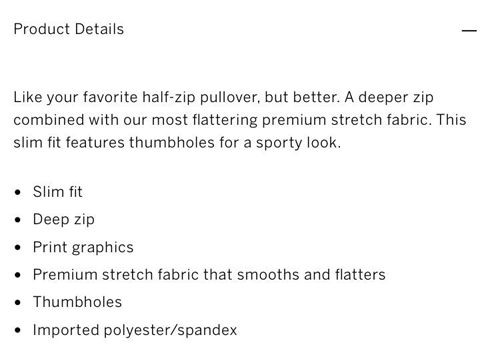
Don't ask for reviews
Product descriptions certainly play a role in conversions but brands simply cannot describe a product the way end-users can. Peer reviews are one of the most vital elements of ecommerce and are leveraged by the majority of shoppers to make decisions.
Getting a product's first review can be difficult, but the first step is to simply ask. While it sounds simple, PowerReviews indicates many retailers overlook this crucial step. Here's a 10-point guide for getting more reviews.

Keep your site slow
Despite every report on the subject advising retailers otherwise, ecommerce sites are getting heavier and slower. Consumers don't care about industry benchmarks though, and are still leaving a site when it takes "too long" to load. Nordstrom indicates that a page load time of 2.5 seconds or below strikes the right balance between functionality and speed and reports lost sales even for a half-second delay.
As reported by the BBC, Nordstrom saw online sales fall 11 percent when its website response time slowed by just half a second. Hosting upgrades, use of a content delivery network (CDN) and image optimization can help speed up a site. Looking for a quick fix?
Turns out, that by removing the metadata associated with JPEGs, it's possible to reduce the size of JPEG files by roughly 16 percent. Also, don't forget to use a free tool like PageSpeed Insight from Google.
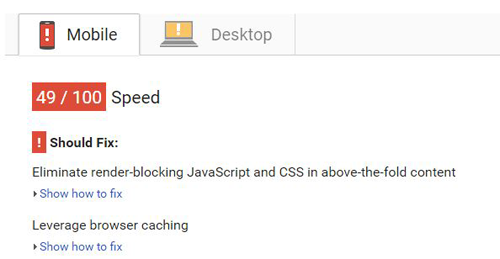
Make buyers create an account
There's a good chance that a retailer will never see a holiday shopper ever again (although there are some strategies to retain them) - and those chances increase when the person is buying from a site that just isn't in their wheelhouse (like a non-parent purchasing a gift for a child).
Including guest checkout has the potential to increase conversions (or at least avoid an abandoned shopping cart) because the holiday visitor isn't worried about receiving promotional emails they don't want long after the holiday ends, and they don't have to fret over creating a username and password.
Guest checkout is an especially crucial feature for mobile shoppers who are even less inclined to fill out extra details particularly when the forms aren't optimized for the device they are using.
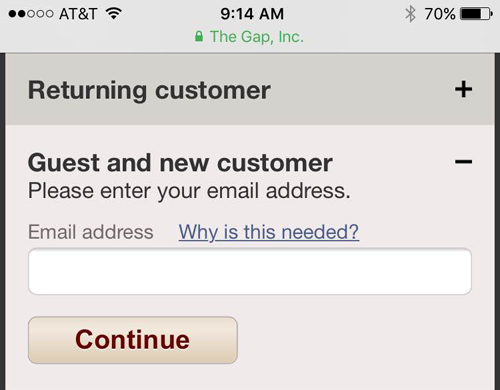
Only accept credit card transactions
Payment processing isn't a topic online shoppers are typically thinking about as they browse through an online store, but when it comes time to check out, they most certainly are.
Credit cards are great but as more shoppers want to complete purchases on mobile, they are looking to Visa Checkout, Apple Pay (which will have an even greater impact this holiday season as it becomes available on the Web) and PayPal to avoid entering their credit card numbers or leaving a room to find their wallet (not the digital kind).
In fact, PayPal is better at converting online shoppers than other payment solutions according to new data from comScore. The PayPal Online Conversion Analysis shows that PayPal converts online shoppers at a rate of 87.5 percent. Comparatively, Visa Checkout converts online shoppers at a rate of 51.2 percent with all other payment types converting shoppers at a rate of 45.6 percent.
This means that PayPal outperforms the nearest competition by 36.4 percent (as reported here). Another benefit of PayPal is its one-touch feature, which allows shoppers to quickly use the fingerprint identification method on their smartphones (that support it).
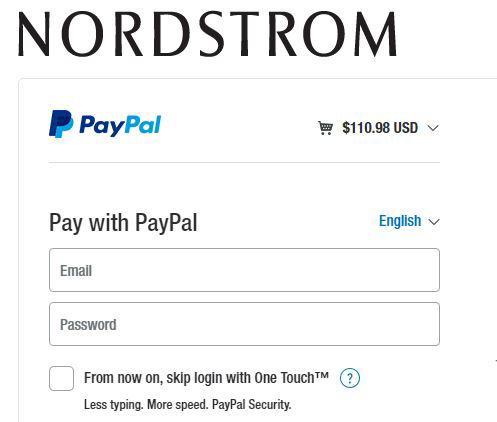
Offer slow or costly shipping
There's no nice way to put it: figure out your shipping woes, now! With each passing holiday season, shoppers get less tolerant of high shipping costs or shipping delays. Amazon has accelerated their expectations in that they pretty much want free shipping (regardless of amount purchased) and for it to arrive quickly.
The good news is that shoppers may be willing to pay for shipping as long as it arrives quickly. Dotcom Distribution's 2016 Packaging Study finds that even though free speed is what shoppers push for, it doesn't mean they won't spend the money for speed when they don't get their wish.
Some key study points backing this:
- 67 percent of shoppers would pay more money to get same-day delivery if they needed a package by a certain deadline (like a birthday or holiday).
- 47 percent would pay more money to get same-day delivery simply because they wanted their order as soon as possible.
- When asked what motivates them to make a repeat purchase with new brands, fast delivery ranked almost twice as high as improved overall quality of the products.
Retailers will want to consider offering early promotions so that their fulfillment processes aren't bottlenecked closer to the actual gift-giving holidays. An "early bird" sale with free shipping slightly over the retailer's average order value (AOV) is a homerun strategy.
When it comes to cost, retailers don't have to offer free shipping right away. They can serve a promotional code to a shopper if they are showing indications that they are about to leave the site or they can serve a reminder that they are "x" dollars away from receiving free shipping.
If a visitor does leave the site without buying, merchants will want to make sure they retarget them with reminders about their items with maybe the first time serving as a reminder and the second serving as an incentive (with an offer of free shipping).
Most ecommerce platforms work with the big marketing automation providers like Act-On, Bronto or Marketo to make quick work out of setting rules for retargeting campaigns.
In the case of Nordstrom, the retailer retargets customers reminding them they have free shipping all the time:

Limit product viewing options
Since online shoppers can't pick up an item, they can't spin it around, know the exact size and get a really good understanding of whether it will be for them - at least that's been the argument against shopping online for so many years.
Savvy retailers, however, have embedded 360-degree views of products, added zoom capabilities, included real-life models (complete with their measurements) and added videos in order for customers to get - some could argue - an almost better view of the product than a person could in-store.
Similarly, the ability for users to upload photos of the product in the "real world" adds to the viewing options and helps shoppers make decisions.
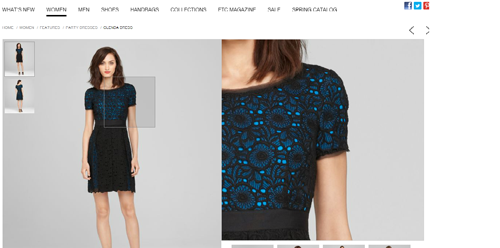
Omit filtering
Navigating an ecommerce website can be time consuming if the retailer hasn't set up aides along the way. Whether a gift giver is browsing the site or looking for something in particular, filtering options can help them get where they want to be faster.
Filters to consider this holiday season are "gifts for her," "gifts for him," but at the bare minimum a product search results page should include filtering options like size, color and price.

Treat visitors like a stranger
Ninety-three percent of retail decision makers say service personalization is a strategic focus, but only one one-quarter of consumers feel as though they are receiving a consistent, personal experience across channels. It may seem like a retailer doesn't know much about a first-time holiday shopper, but that couldn't be further from the truth.
With Monetate, for instance, retailers can leverage location data to serve them relevant information. Also, if it's a person's first visit, a retailer can recognize this and welcome to the site. The next time they visit, however, the merchant better serve them content about their last visit (items viewed, suggested products, etc.).
Old Navy has an interesting strategy to help the customer help themselves, asking permission to send them an "exclusive link" to shop anywhere, on any device (allowing Old Navy to associate each device with that account). The old "onion" adage is certainly true with online shoppers, but it's the retailer's job to pull back those layers and then leverage the insights gained to personalize their experience.

Happily Ever After
Relationships are hard work, and the relationship between a retailer and their customers is no different. While holiday shoppers will come and go, providing them a great first-time experience increases the chances they will convert then or come back again later to complete their purchase.
Additionally, a great first purchase can lead to many more if the retailer plays their cards right when the holiday season is all packed away.








